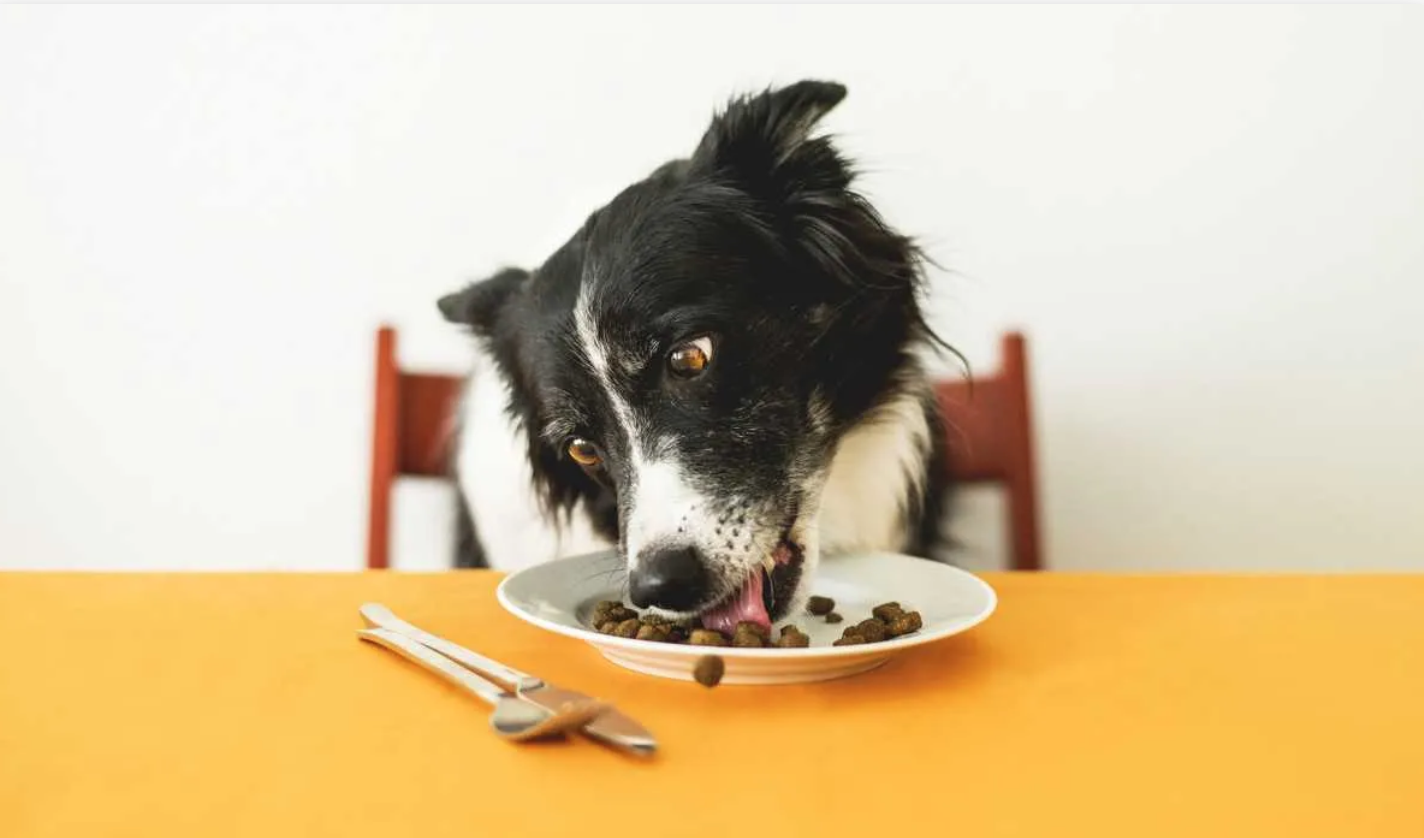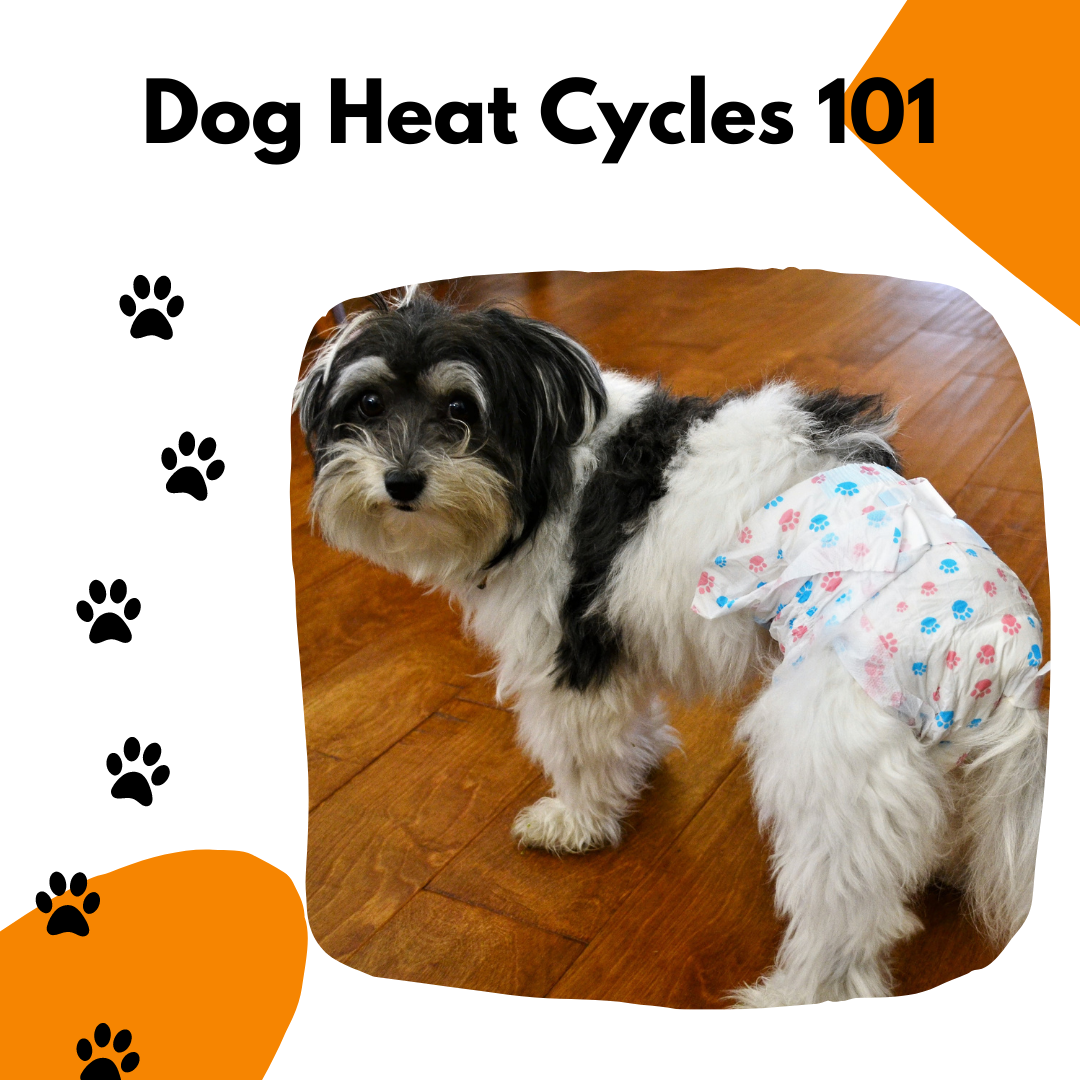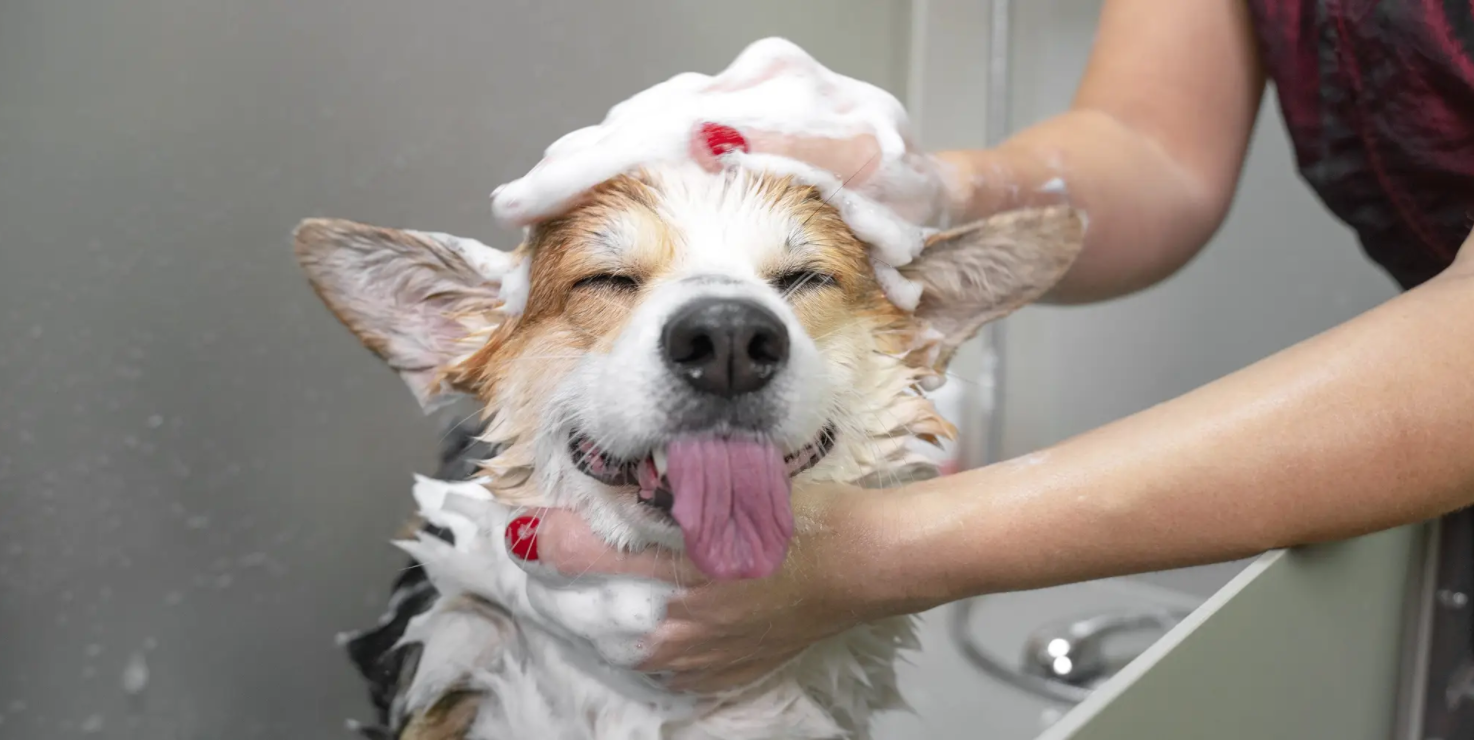The dog food chart is crucial in feeding your dog a balanced and nutritious diet. The basic aim of feeding is maintaining health and well-being, and the principles governing feeding do contribute greatly toward this end.
Everything from nutritional requirements to dog food charts specific to different life stages, sizes, breeds, and health conditions will be taken care of in this guide-both to ensure that your dog receives the caring they deserve and the health benefits they should.
Dog Food Chart: Everything You Need for Balanced Nutrition
Dog Diet Chart by Life Stage and Size
Understanding the dietary requirements of dogs according to their age and size would guarantee a healthy and well-being lifestyle. Here is a quick guide to the nutritional needs of puppies, adult dogs, and senior dogs that are grouped according to body size.
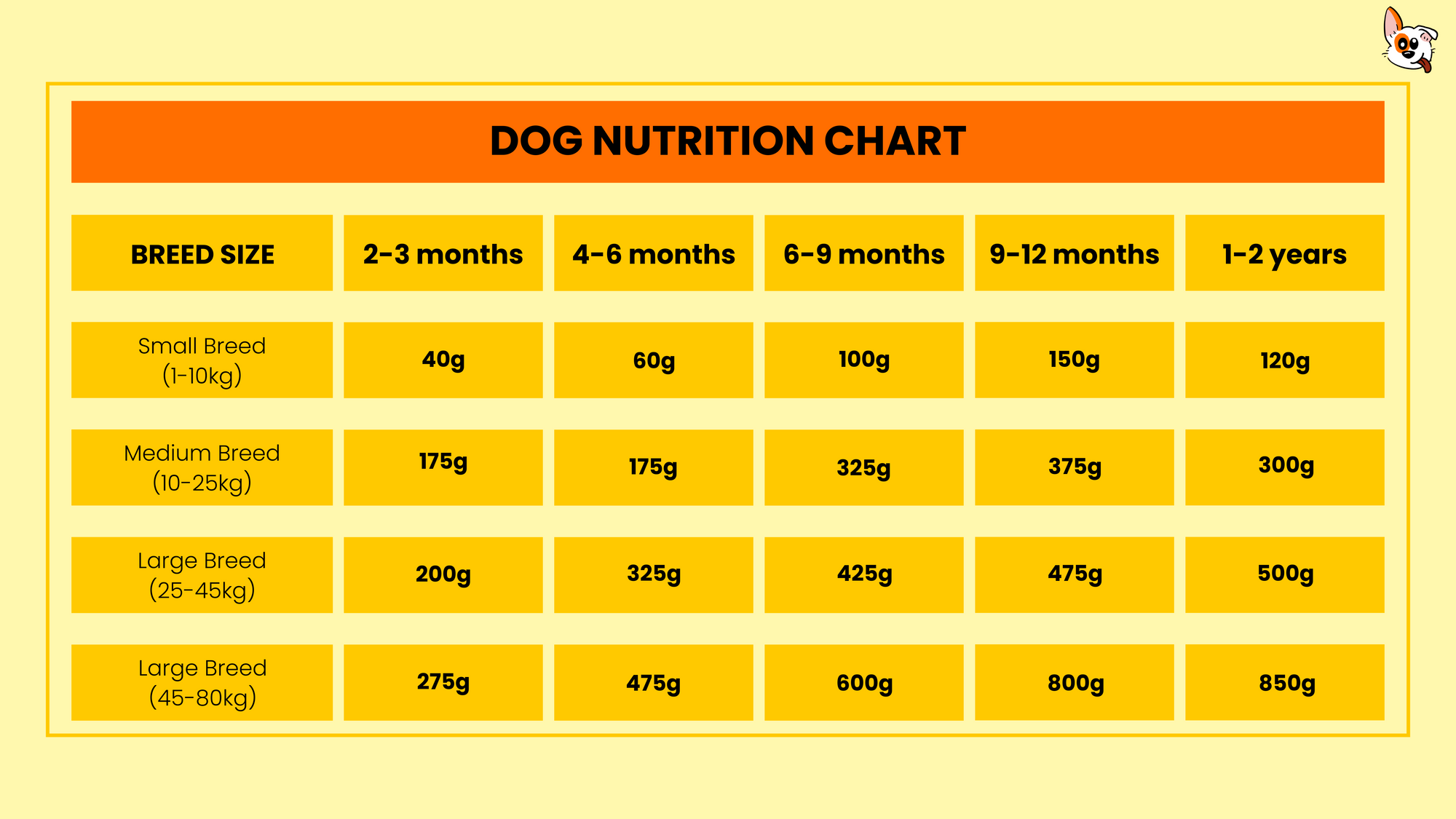
Puppies
To support their rapid growth, puppies require a high protein and fat diet in their early life. The proper puppy should have a protein content of about 22-32% and a fat content between 8-20%, based on breed size.
Feeding Frequency and Portion Sizes:
- 6 to 12 weeks: Feed 4 meals per day.
- 3 to 6 months: Reduce to 3 meals per day.
- 6 to 12 months: Transition to 2 meals per day.
- For small breeds (less than 10 kg): about 1 cup a day. Larger breeds (up to 45 kg): could require up to 4 cups during the day spread across meals.
Adult Dogs
Adult dogs need a well-balanced diet that should help provide energy and maintain their body condition. The diet should contain 18-25% protein and 5-15% fat, modified according to physical activity.
Adjusting Food Quantities:
- Active dogs need more calories; consider increasing food portions for them.
- Less active dogs: are going to need less food proportion and canine weight gain down the line.
- Generally, adults are fed twice a day. A medium dog (10-25 kg) will need some 2-3 cups a day, while larger dogs may need up to 4 cups.
Senior Dogs
- Senior dogs require easily digestible food that will support joint health and immunity. Key nutrients: include glucosamine for joints and antioxidants to support immunity.
- As seniors get older, their calorie intake should be decreased to prevent obesity, as many senior dog foods provide about 18% protein along with less fat.
- In this case, small breeds may require about 1 cup per day, while larger breeds may require up to 3 cups.
Small vs. Large Breeds
- The food portions fed to dogs vary widely between the small and large breeds because of their differing metabolizing capacity and energy demands.
- For instance, a puppy may be kept on a high-protein diet during the period of growth for larger breeds such as Labrador Retrievers, while one for smaller breeds such as Pomeranians and Chihuahua may be kept with smaller-sized kibble suitable for their jaw structure.
Specialised Dog Food Chart
Dogs with special conditions must be fed using special food and diets in order that they remain happy and healthy. Below is a guide that entails dietary recommendations for pregnant and lactating dogs as well as for dogs with health conditions such as diabetes and kidney disorders.
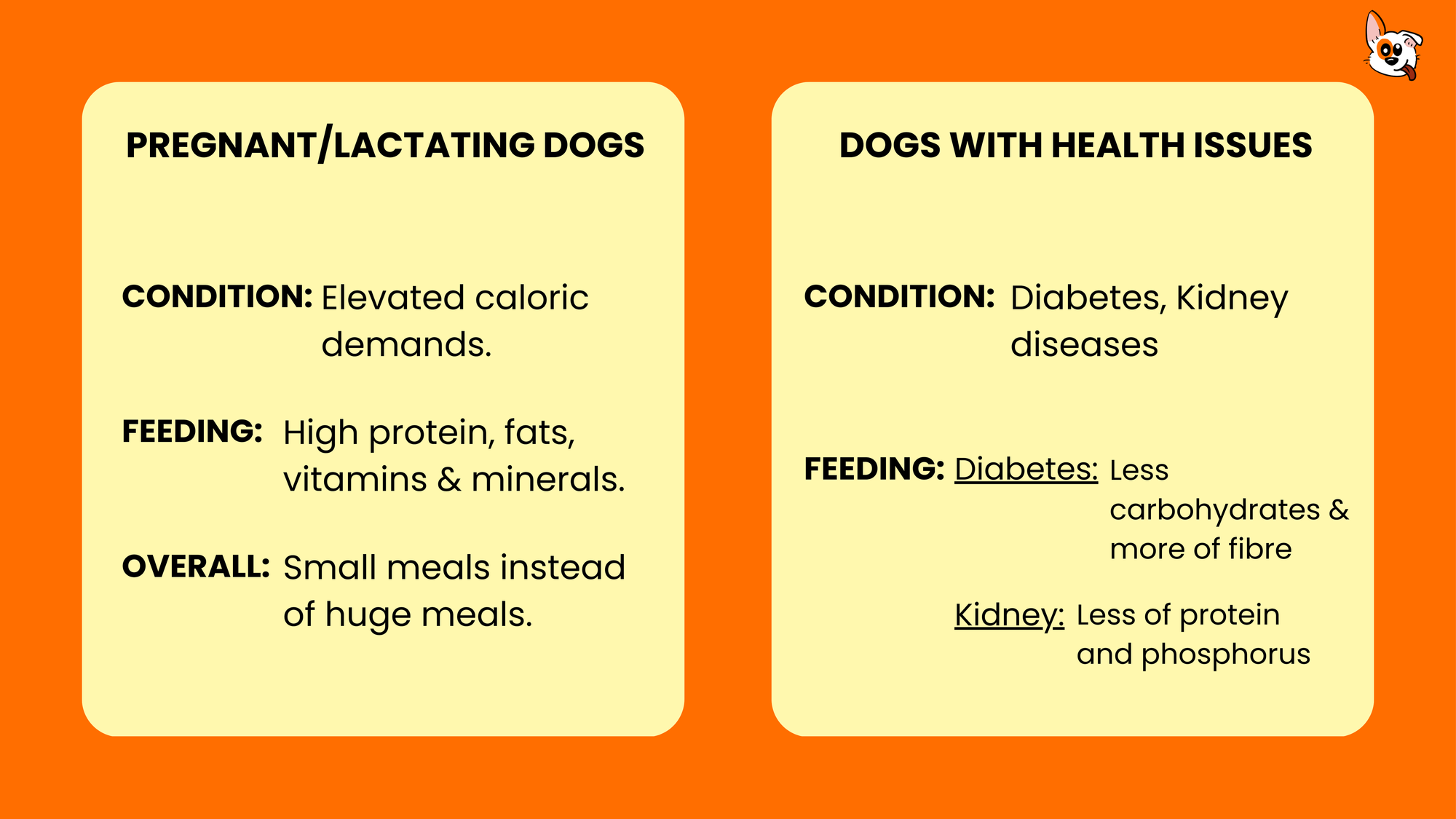
Pregnant and Lactating Dogs
- Pregnant and lactating dogs experience elevated caloric demands since they will need more energy to sustain fetal growth and produce sufficient breast milk. Thus, feeding needs to be high in protein, fat, vitamins, and minerals.
- Small meals offered throughout the day can be more beneficial than one or two large meals to ensure a steady supply and minimal digestive disturbances.
Dogs with Health Issues
- Like humans, dogs can develop certain diseases, i.e., diabetes or chronic kidney disease, and some do require diets that will meet their specific needs. A diabetic dog does require less carbohydrates and increased fiber since this will stabilize blood levels. With kidney cases, there generally is a need to restrict protein and phosphorus intakes.
- It is very important that a veterinarian is involved to decipher their dietary needs. The veterinarian can recommend what foods would be acceptable, given a dog's medical condition. Prescribed diets fit excellently into chronic disease processes.
Homemade Dog Food
Every dog owner has heard of the many benefits of homemade dog food. These include control of ingredients, freshness, specificity to the dog's needs, especially in the case of food allergies, etc. Such food avoids harmful additives and preservatives often present in commercial dog foods.
A simple recipe for balanced homemade dog food includes boiled chicken, brown rice, and mixed vegetables.
- Boil about 1 cup of skinless chicken breast in the water.
- When fully cooked, shred it.
- Cook 1 cup of brown rice according to package instructions.
- Steam or boil about 1 cup of safe vegetables, such as peas, carrots, or green beans.
- Combine all the ingredients and serve them in appropriate amounts corresponding to the size of the dog.
Homemade dog food can be properly nutritious, although any owner considering it would be wise to consult a veterinarian to make sure the diet is balanced for the special needs of each specific dog. A vet can also help you identify supplements you may need to maintain good health.
Dog Safe Food Chart: Know What’s Safe for Your Dog
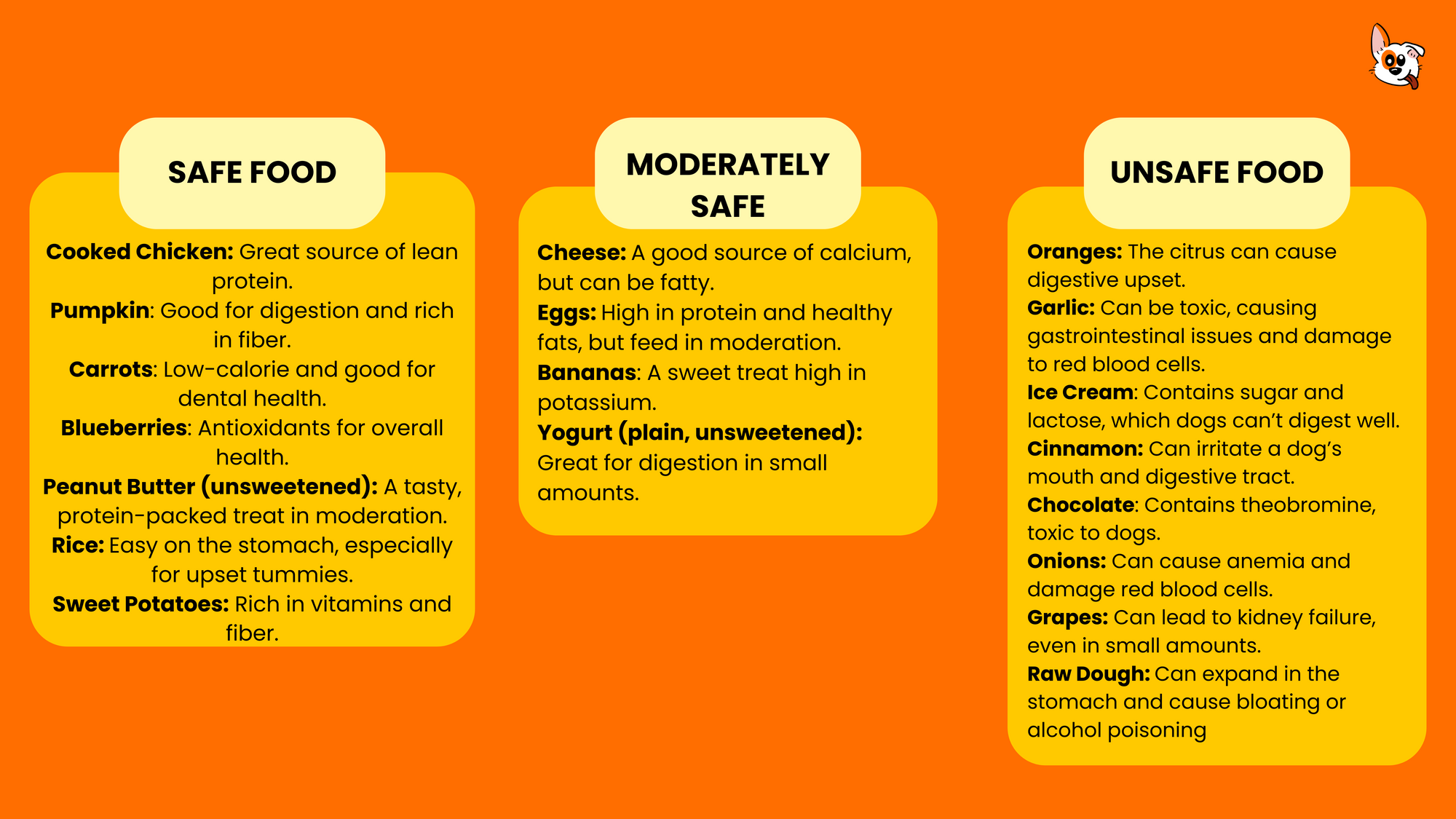
Safe Foods
- Cooked Chicken: Great source of lean protein.
- Pumpkin: Good for digestion and rich in fiber.
- Carrots: Low-calorie and good for dental health.
- Blueberries: Antioxidants for overall health.
- Peanut Butter (unsweetened): A tasty, protein-packed treat in moderation.
- Rice: Easy on the stomach, especially for upset tummies.
- Sweet Potatoes: Rich in vitamins and fiber.
Safe in Moderation
- Cheese: A good source of calcium, but can be fatty.
- Eggs: High in protein and healthy fats, but feed in moderation.
- Bananas: A sweet treat high in potassium.
- Yogurt (plain, unsweetened): Great for digestion in small amounts.
Unsafe Foods
- Oranges: The citrus can cause digestive upset.
- Garlic: Can be toxic, causing gastrointestinal issues and damage to red blood cells.
- Ice Cream: Contains sugar and lactose, which dogs can’t digest well.
- Cinnamon: Can irritate a dog’s mouth and digestive tract.
- Chocolate: Contains theobromine, toxic to dogs.
- Onions: Can cause anemia and damage red blood cells.
- Grapes: Can lead to kidney failure, even in small amounts.
- Raw Dough: Can expand in the stomach and cause bloating or alcohol poisoning
How Much Food Does a Dog Need and Why It Matters
Proper feeding keeps your dog healthy and fits for activities. Undernourishment in a dog will cause poor coat condition and associated problems with growth in puppies. Overfeeding causes obesity, joint problems, heart diseases, and cuts short the life span of the dog.
Portion control also prevents over-expected or underweight conditions based on structure and activity level-based diets that override taking any additional calories.
The next vital aspect is the daily feeding schedule. Established timed schedules for feeding will keep your dog on a steady metabolism, preventing sassy eating behavior, thus regulating energy levels and avoiding digestive disturbances.
Make sure to keep track of your dog's weight while consulting your vet on personalized dosages.
Understanding Your Dog's Nutritional Needs
Key Nutrients for Dogs:
- Proteins: These are very important for muscle repairing, growth, and overall body functioning. Examples are chicken, beef, and fish.
- Fats: These are needed for energy, healthy skin, and smooth, shiny coats. Examples are fish oil, and chicken fat.
- Carbohydrates: These are good to supply energy and to aid digestion. Examples are rice, and sweet potatoes.
- Vitamins & Minerals: Needed for immune health, the strength of the bone, and overall health. Common sources are fruits, vegetables, and meat.
Water is also among the critical ingredients present in the dog diet that helps in digestion, transport of nutrients, and regulates temperature.
Caloric Needs:
A dog's calorie requirement is influenced by such factors as age, activity level, size, but perhaps most importantly, breed. To quantify calories taken by a dog in a day, one weighs it against the dog's activity level on a day.
- Age: Puppies and active adult dogs usually need more calories.
- Activity Level: Very active dogs need a lot more calories.
- Size: Typically bigger dogs need more food than small dogs.
- Breed: Some breeds have a higher or lower energy need.
To calculate how many calories your dog needs a day, use the chart for feeding with the weight and level of activity.
Below is a short feeding guide according to a dog’s size:
- Small Dogs: 200-400 calories
- Medium Dogs: 400-800 calories
- Large Dogs: 800-1600 calories
Commercial vs. Homemade Food:
Commercial dog food and homemade dog food have their positives and negatives. Commercial foods are convenient and have a longer shelf life, but may include preservatives. With homemade diets, the owner controls the ingredients used in the food but requires preparation to balance nutrition completely. Any of the two could work, but it is best if the meals pass veterinary standards, whether commercial or home-cooked. These are just a couple of considerations to keep in mind; whatever the dietary plan, consulting your vet is advisable.
Tips for Feeding Your Dog
Interpreting them will help maintain a proper diet specific for your dog. For this reason, dog food charts give guidelines based on the weight, age, breed, and activity levels of the dog to ensure the right portion sizes.
Portions are again important, as they must be regulated as the dog’s weight and activity level fluctuates. For instance, with some more exercise, or if the dog has put on some weight, you may have to decrease or augment an intake of food. Sticking to regular mealtimes helps regulate your dog’s metabolism and promotes consistency.
Treat limitations help prevent obesity in dogs, ensuring they don't get too many calories in their food. This way, you will be able to feed your dog rightfully for the best health for longer life among the dogs. For personalized training catered to your dog's needs, always consult first your veterinarian.
To Conclude…
Encompassing a personalized dog food chart is crucial in meeting your dog’s individual nutritional needs. Please help ensure a long, healthy life for your dog by enlisting your veterinarian for proper feeding plans.
For more information, connect with Sploot for AMA (Ask Me Anything), Pup Talks, events, and follow us on Instagram.
FAQs on Dog Food Chart
Is a dog safe food chart really helpful for avoiding toxic foods for dogs?
- Yes, a safe food chart helps you avoid harmful foods and ensures you feed your dog the right, healthy foods.
Is a pregnant dog diet chart any different from the regular chart?
- Yes, pregnant dogs require increased calorie and nutrient intake, with frequent meals for optimal health.
How much food does a dog need?
- The amount of food depends on your dog’s size, age, activity level, and health. Refer to a dog food chart for specific portion sizes.
Can a vet approved homemade dog food chart include recipes for specific breeds?
- Yes, vet-approved homemade charts can be customised based on breed-specific needs.
Where can I find an accurate ‘how much food should I feed my dog chart’?
- Consult a veterinarian or refer to reputable online resources for a tailored feeding chart.
How to read a dog food feeding chart for portion control?
- Look for the recommended portion sizes based on your dog’s weight and activity level, and adjust accordingly.
How do I calculate what to feed my dog?
- Calculate your dog’s daily calorie needs based on their size, age, and activity level, then adjust portions accordingly.


